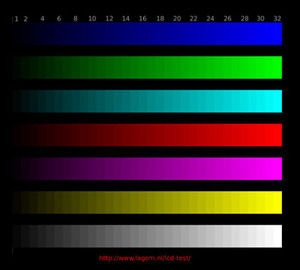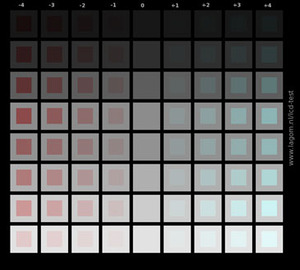
Image Quality
But what about image quality? As ever, the seasoned LCD aficionado will immediately recognise the TN panel that underpins this monitor. There's simply no mistaking the slightly weedy, washed out colour balance and general lack of visual dynamism.Similarly, the results of our objective image quality tests tell a familiar tale. Plenty of compression is evident in both white tones and the colour scales, for example. The viewing angles in the vertical plane are also typical of TN panels – not all that great, in other words.
Despite all that, don't go thinking this screen is a stinker. TN panel technology continues to improve to point where it now looks pretty good in isolation. It's only when you put this monitor directly alongside a high quality IPS or PVA screen that you realise just how much you are missing.
Actually, that's something that applies equally to the Iiyama. There's very little between the two for overall look and feel. Indeed another strong point shared by both screens is the razor sharp image quality that results from packing the 1080p resolution into a fairly small panel.
One area where the VX2260WM does carve out a small lead is the depths of its blacks. In this regard, it's about as good as we've seen on a TN panel. The absence of backlight bleed around the panel's edges is also welcome. Altogether, it makes for a very decent monitor for watching movies as well as a great gaming panel thanks to good pixel response (more on that in a moment).
Grudgingly, we also concede that Viewsonic's latest implementation of dynamic contrast technology is one of the best yet. We say grudgingly because we remain unconvinced that dynamic contrast really delivers the benefits that are attached to it. The basic idea seems sound – modulating the backlight to suit the brightness of the image data being rendered.
But the harsh truth is that not only is it a technology attempting to compensate for an inherent design flaw rather. It also has a negative effect on occasion by crushing details, particularly in dark areas such as shadows. One thing is for sure. The 20,000:1 contrast ratio Viewsonic claims with dynamic contrast enabled raises expectations well beyond what this monitor can achieve.

MSI MPG Velox 100R Chassis Review
October 14 2021 | 15:04












Want to comment? Please log in.